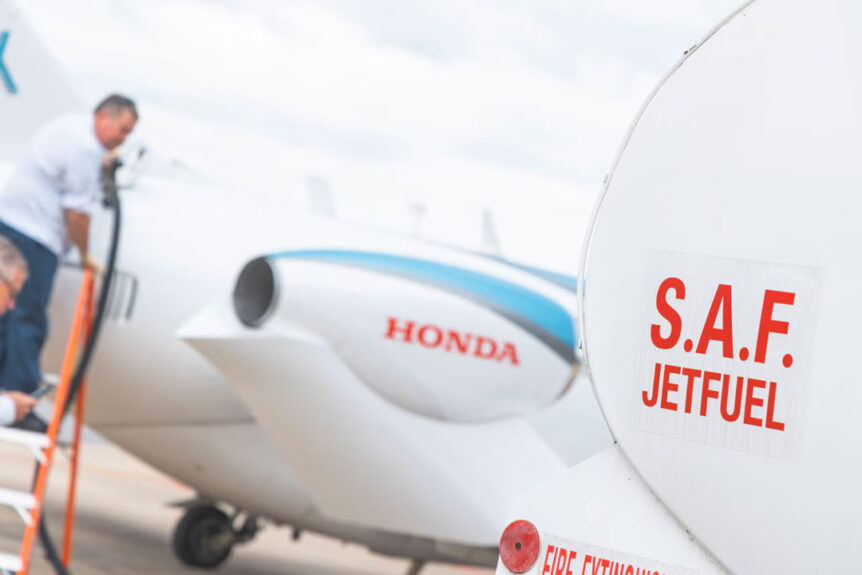A HondaJet 100% SAF flight took place in Greensboro, North Carolina. There, a production aircraft lifted off and landed using a complete sustainable aviation fuel blend in its HF120 engines without any modification. The flight used a neat mix of HEFA SPK and HDO SAK, confirming full blend operability beyond the 50 percent limits common in regular service.
Why this matters for business aviation and beyond
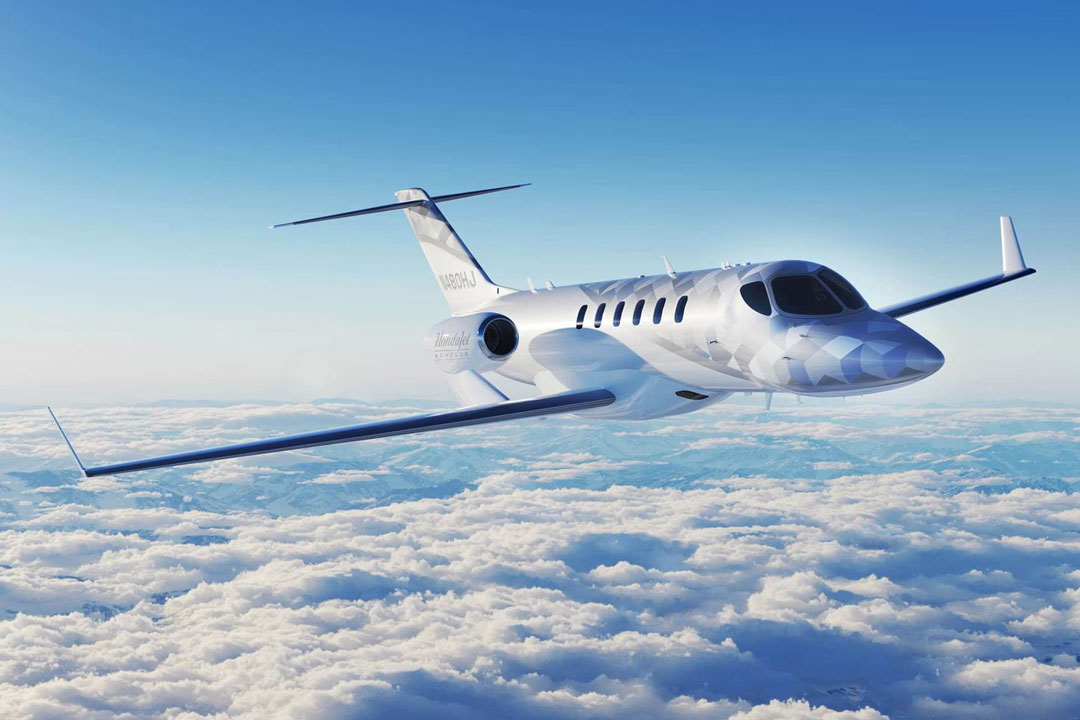
HondaJet Echelon | Photo: hondajet.com
Pressure to decarbonize aviation is growing as operators seek credible steps they can take today. A full blend demonstration on a certified light jet shows that emissions reductions do not rely only on new airframes or radical propulsion changes. This HondaJet milestone aligns with a broader corporate goal to decarbonize operations by mid century while building operator confidence in practical sustainability options for existing fleets.
Another reason this is significant is drop in capability. SAF pathways like HEFA SPK provide kerosene like performance that fits current engines and fuel systems. Adding an aromatic component such as HDO SAK helps meet material compatibility targets so fuel seals and systems work as designed, which is critical for full blend use on both engines and the entire fuel system.
How the HondaJet validated 100 percent SAF
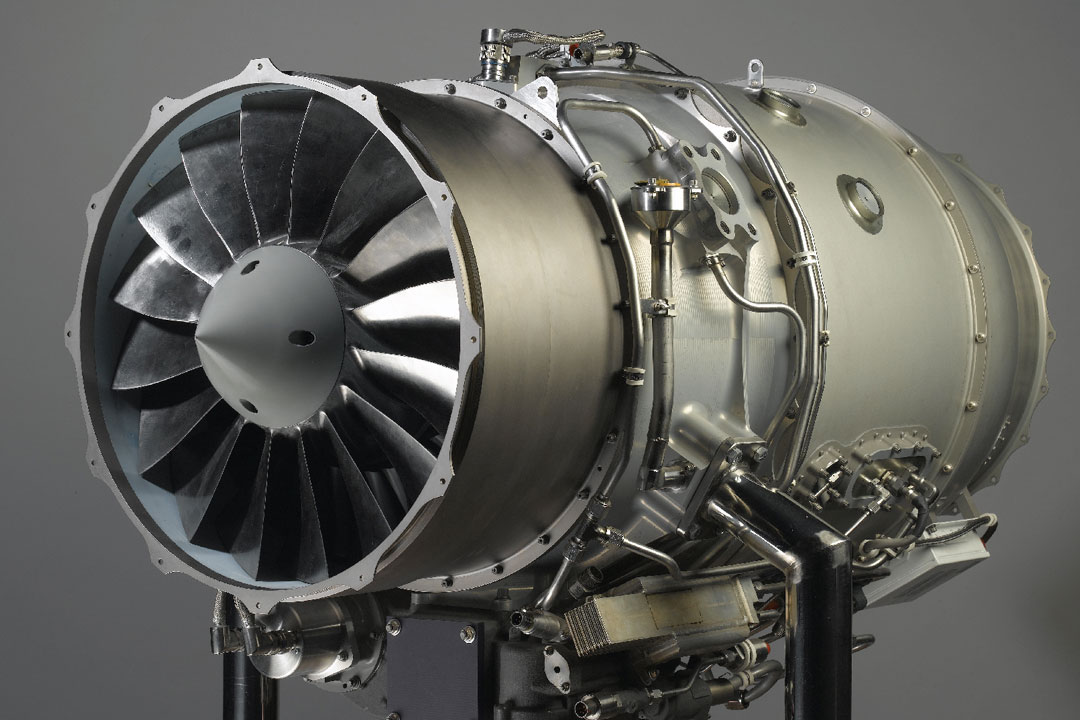
HF120 engine from GE Honda Aero | Photo: geaerospace.com
The HF120 engine from GE Honda Aero had already undergone controlled, full SAF ground testing as early as 2022 using HEFA SPK, with more testing on other low carbon pathways. Those programs benchmarked performance against Jet A and confirmed no loss in thrust or operability, setting the stage for an in aircraft flight on a complete SAF blend.
During the demonstration, both engines ran on the same neat blend, not a split tank test. No special hardware was added to the airframe, and the aircraft performed within normal handling and performance envelopes. This operational profile sets the flight apart from earlier research sorties that used one engine on full SAF and the other on conventional fuel for comparison.
What the fuel blend tells us
HEFA SPK is made from waste lipids like used cooking oils and tallow. It delivers high energy content with very low sulfur and aromatic levels, which improves emissions and reduces particulates. HDO SAK adds synthetic aromatics that help meet material compatibility and density targets for aircraft fuel systems.
The combined result is a drop in, full blend fuel that maintains range, cold weather operability, and engine durability for a light jet mission.
Why the HondaJet platform is a strong SAF demonstrator
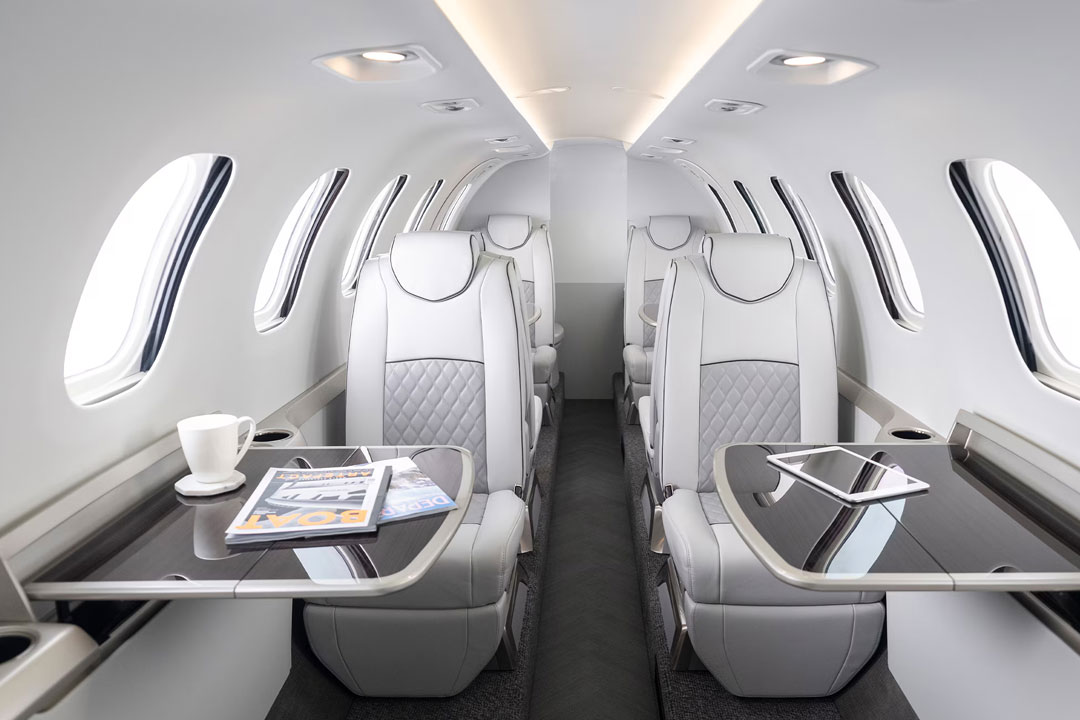
The HondaJet Echelon has a spacious cabin suited for long range travel, with seating for up to 11 occupants. | Photo: hondajet.com
The airframe emphasizes drag reduction with an over the wing engine mount, natural laminar flow surfaces, and a clean systems layout focused on efficiency. Operators already report favorable fuel burn compared to peers in the same class, which amplifies lifecycle emissions benefits when using low carbon fuels.
The aircraft’s widespread use in owner flown and charter missions also makes it visible to market segments that can act quickly on voluntary sustainability initiatives.
What still needs to scale
Cost and availability remain the biggest hurdles. SAF carries a price premium that narrows as production scales, but supply is still concentrated at selected hubs.
Broader adoption will depend on policy support, investment in production pathways such as HEFA and alcohol to jet, and airport storage and blending capability. Demonstrations on production aircraft validate technical readiness while signaling demand to producers and fuel distributors.
How this milestone fits the larger SAF timeline
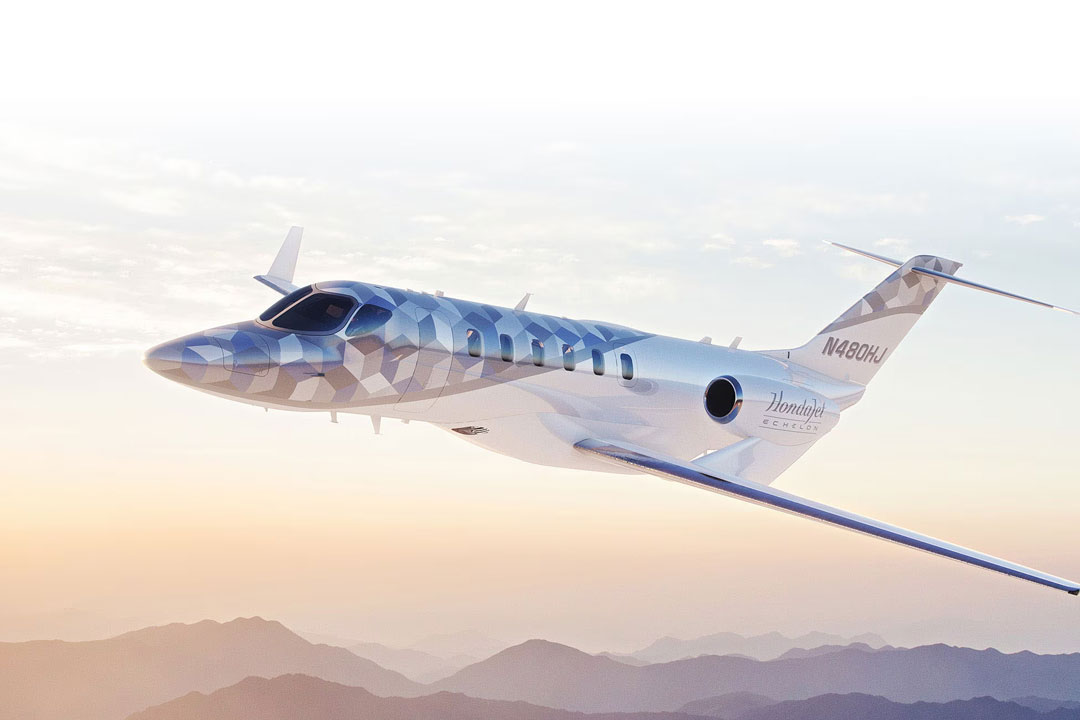
HondaJet Echelon | Photo: hondajet.com
The engine story began years earlier. GE Honda Aero completed controlled, 100 percent SAF ground tests on the HF120 in 2022, comparing performance with conventional Jet A. Those runs demonstrated equivalent operability and paved the way for this flight on a full blend in a customer deliverable airframe.
With both lab and flight data in hand, the focus shifts to certification workstreams and broader operator enablement at airports where SAF supply is ramping up.
